Designing a unicorn: how Canva plans to conquer the world
The local start-up has defied the tech bloodbath, posted a $39bn valuation and has plans to list on the US stock exchange. What’s their secret?
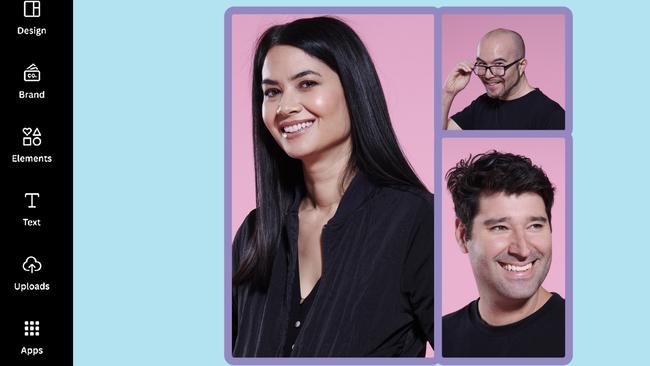
A clear crisp evening in the dying days of winter and a Teenage Mutant Ninja Turtle has just walked past me. I’ve joined the almost 4000-strong workforce at Canva – the Australian tech startup turned behemoth – for a party at Sydney’s Overseas Passenger Terminal.
People are enjoying free beers, munching on fairy floss and dancing to Darude’s dance anthem Sandstorm. On the decks, Cameron Adams – Canva’s co-founder, chief product officer and resident DJ – has got the dance floor jumping. Canva, in strong Silicon Valley tradition, is big on team bonding and loves a party, whether it’s Mardi Gras, May the 4th (Star Wars Day) or Halloween, bridging the distance between its staff across 10 offices around the world from Manila to Wuhan, London and Austin, Texas.
But tonight isn’t your run-of-the-mill Canva knees-up. It’s ten years since Melanie Perkins and Cliff Obrecht joined forces with Adams to launch a software design venture now valued at $39 billion and poised to go public as the next step in its breathtaking evolution. Tonight’s event is themed, cutely, as a “10th birthday party” so Canvanauts (as the company refers to its staff) are all dressed up: think Harry Potter, Pikachu and the aforementioned Turtles.
In some ways it’s all very apt. Canva’s design templates, which proliferate across businesses, school projects and social media accounts, are easily identified by their childlike fonts and palette, while the company’s very foundation is a start-up fairytale.
Perkins and Obrecht, a couple in life (she’s smart, beautiful and driven; he makes her laugh) as well as business, came armed with the humblest of origin stories, only to achieve stratospheric success. Next stop: over the Nasdaq rainbow.
Peek behind the scenes of this company, though, and you see that the fun facade masks an intensely serious operation dedicated to a goal, as Perkins puts it, of “becoming one of the most valuable companies in the world”.
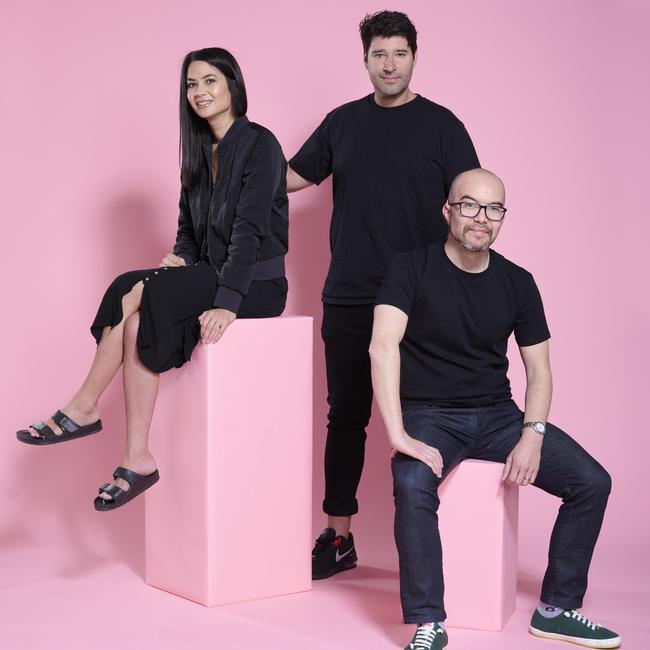
In August, Rick Baker’s Blackbird venture capital fund, one of Canva’s first backers, sold a 3 per cent stake in the company to top US investors including Coatue Management and ICONIQ Capital – the latter functioning as a family office for the likes of Mark Zuckerberg, Sheryl Sandberg and Jack Dorsey. With Baker hinting at the growing pressure to convert Canva’s staggering on-paper wealth into cold hard cash, it’s all building toward the initial public offering (i.e. offering shares to the public on the stock exchange), likely within the next 18 months in the US.
Even tonight’s 10th birthday party is grown-up HR business. As early Canva investor, board member and former top Google executive Wesley Chan tells me over a Zoom chat from New York, it’s a good test of the strength of a company’s culture if employees still don fancy dress for company events. It shows investors – and the world – that the company is solid. “I watched it first-hand at Google. That was the gold standard of scaling a company... [co-founders] Larry and Sergey scaled the company massively and to pull that off, the most important thing they figured out was how to keep the culture intact,” Chan says. “Mel, Cliff and Cam have figured that out too.”
Indeed, when it comes to all things to do with culture, Canva is serious. As Chan puts it: “Top of their value list is to be a good human, and that’s something they actually enforce. If you don’t clean your table or something they call you on it, and eventually if it’s not a good fit they spit you out pretty quickly.”
Baker says: “[Canva’s] culture has not just been developed by chance. Mel, Cliff and Cam have worked really hard and thought hard about how they make Canva, how they keep this culture and how they make sure it doesn’t feel like a big business.”
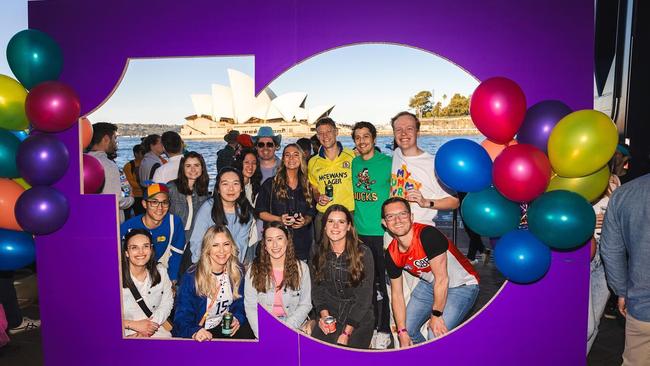
Earlier this year, though, it seemed as if the balance may be off. Media reports cited complaints of increased pressure and a culture of micromanagement. Specifically, the company’s performance rating system that marked workers across five categories – Missing, Approaching, Thriving, Excelling, and Redefining – came under scrutiny. Canva says it’s about making expectations clear. More workers are climbing into the top category, it says, and the team “like the clarity and recognition”. The media reports are “inaccurate”, it insists.
There’s no question, though, that the winds of change are blowing for Canva.
Amid a global downturn for tech, its valuation has plummeted by 36.25 per cent from its peak of $US40 billion [$62.3 billion] in September 2021. In June, US-based investor T Rowe Price marked down its Canva stake by 68 per cent. Obrecht tells me he accepts the reduced valuation. “All things considered, with most tech companies down more than 50 per cent, I think the valuation is solid,” he says.
Of course, Canva is far from alone in being emphatically marked down. Take Klarna, the Swedish buy-now-pay-later provider, which is down 85 per cent from the $US45.6 billion valuation it was assigned in 2021. But whereas Klarna responded by laying off workers, Canva has declared it won’t make any job cuts. Colourful Canva is in the black.
As a private company, Canva’s financials are hard to read. But its leaders say more than 135 million people use the platform every month (including one in ten Australians) and it pulls in more than $US1.7 billion in annual revenue.
Canva is building what it sees as the future of visual communication. (Its users have created more than 17 billion designs, from splashy social media graphics to restaurant menus.) And before you ask, rather than facing down the threat of Artificial Intelligence, it’s part of the plan to take AI into the next phase of the company’s growth.
Somewhat miraculously in the current climate for tech firms, Canva is still hiring and has about 300 open roles.
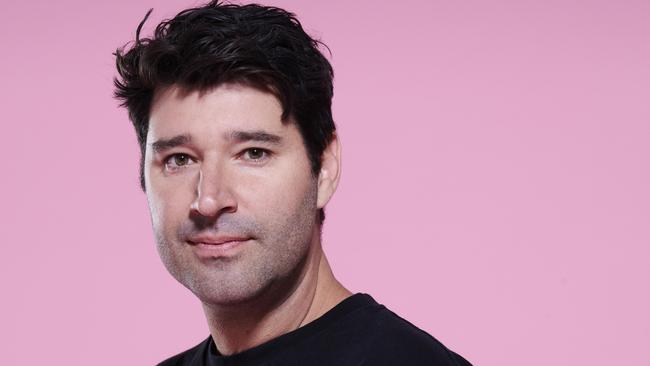
Hanging on the walls on the top floor of Canva’s Sydney HQ are caricatures. Among them, “head cheerleader” Perkins is depicted wearing figure skates and hula hoops (her first dream was to be a professional figure skater) while Obrecht, as “chief yolo” (that’s slang for You Only Live Once) is brandishing a cigar, baggy pants and a comically large gold chain.
There are dozens of these caricatures, as employees win one if they hit the five-year employment mark. Perhaps more enticingly, at five years employees also earn an “Epic Recharge” – a month of paid time off plus $3,000 to use towards a holiday or any kind of “fun”. The fact Canva is profitable while boasting all the perks of a Silicon Valley startup is certainly admirable. Canvanauts enjoy free drinks and food, lunch cooked by an in-house chef every day, and Canva merchandise, which staff apparently wear even when they’re not in the office. The company employs a full-time “Vibe team” of around 70, led by “Head of Vibe“ Chris Low, whose job it is to make sure the Canva experience is fun for everyone.
Canvanauts have more than 500 clubs they can join, including a “really bad movie club”, hiking club, horoscope club, and water club – a crew that call themselves the “hydro homies” and conduct blind tastings of bottled water brands.
But chief people officer Jennie Rogerson, who herself was rejected twice from the company that famously receives over 300,000 applications a year, says Canva’s pull is less about its free lunches, its annual “vibe and thrive” allowance for employees or even its water club. “People who want to join Canva want to solve complex problems for users who love our product,” she says. “If you’ve used Canva you know how delightful it is to use and how easy it makes design. People want to join that and add their skill-set to that.”
It’s probably a truism in tech that the simpler the tool, the harder the work that went into making it. Canva’s tool is incredibly user-friendly, and it hasn’t come easily for the technicians.
In conversations on and off the record with around a dozen employees for this article, more than half said their worst period with the company was in fact six years ago, when engineers had to rewrite much of Canva’s code. The project, known internally as E2 or Editor 2, meant the platform couldn’t add any features for two years. It was, many said, the most stressful period of the company’s history to date. One described it as “hellish”.
Mike Williams joined in 2016 and now serves as Canva’s head of sustainability. “When I started out there was an air conditioner dripping on my desk,” he recalls. “Mel said our offices looked a bit chic and I thought she said they looked a bit shit…” He remembers the E2 years as painful. “That one period rewriting the whole front end, it took us a couple of years... The whole engineering team was tasked with basically rebuilding and rearchitecting the entire front end of the product – that was all the engineering horsepower of the company focused on this one thing. [That time] probably looked like a smooth sail from the outside, but the reality has been anything but.”
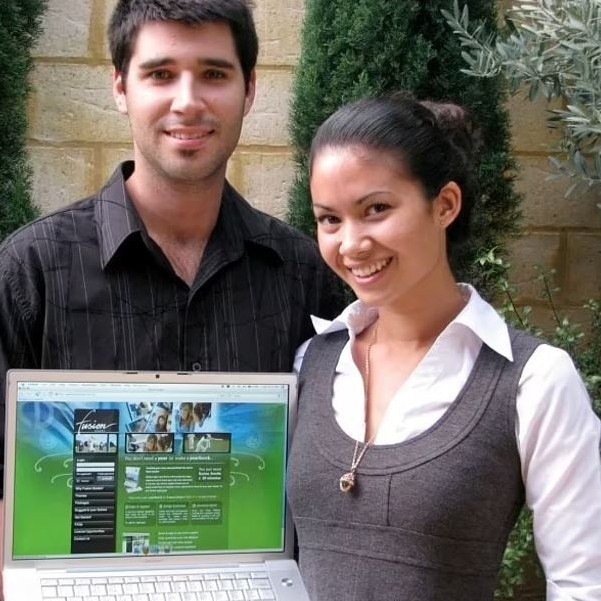
Everyone knows Melanie Perkins is the brain behind Canva – but you could say the Perkins/Obrecht alchemy is the secret sauce. The middle child of an Australian-born teacher and a Malaysian engineer of Filipino and Sri Lankan heritage, Perkins now draws unironic comparisons to Steve Jobs and Google co-founders Larry Page and Sergey Brin from tech heavy hitters. Diligent and studious – a Tournament of Minds kid – she recalls getting told off by her teachers for doing too much homework. Obrecht, on the other hand, held his high school’s record for being “the most suspended student without being expelled”, he says. “That was really about my parents being good negotiators,” he adds, declining to share the details of his misdemeanours.
The pair share a strong work ethic. As a 15-year-old, Perkins created handmade scarves in her mother’s living room to sell at Perth’s market stalls. Obrecht started working at 13 as a dishwasher at Hillarys Boat Harbour north of Perth’s CBD. “That teaches you good lessons, earning five bucks an hour,” he says. “You just learn the value of hard work. And I’ve had every crap job since then.”
Perkins was 17 and Obrecht 19 when they met watching the fireworks on Australia Day. Obrecht needed Perkins to pay for his 80c train ticket home, having spent all his money. “I spent it all on beer,” he says. “I was living pay cheque to pay cheque... I got my Dad to pick us up from the train station and drop us both off.”
He plucked up the courage to ask her on a date. She said yes. He told her he was studying education. He may not have mentioned immediately that he had started an arts science degree but after “being at the pub too much” had failed chemistry.
The pair’s first entrepreneurial foray was doing airbrush tattoos at carnivals after Obrecht saw a sign while working as a labourer on a construction job. (The sign had read Sex. Now that I’ve got your attention… ) “That became really our first taste in business,” he says. “Every second weekend we’d go to some country fair, set up our table and our tent and cash in, then go travelling three months a year.”
They discovered the special sauce quickly – “We quickly figured out the country fairs were where the money was at,” he recalls. Plus, they loved working together. “It was so much fun. It was just like, ‘Yeah, let’s run with this’.”
It was the pair’s second business, Fusion Books, that would become the foundation of Canva. Fusion, born in 2011, helped secondary school students design their own yearbooks. Perkins came up with the idea during stints as a private tutor and when watching classmates struggle with design programs like Photoshop and InDesign. “[The software] made the students feel stupid... they couldn’t remember all these weird buttons,” she says.
Perkins and Obrecht didn’t know how to code, so took out a loan for $50,000 – down the track it was bolstered by another $20,000 loan from NAB, and supported by the government’s R&D tax concession – and paid a Perth company to build the software based on wireframe sketches from Perkins. With the slogan “Yearbooks made simple”, Perkins sent sample yearbooks to high schools all over the country, then walked teachers through how to use it in 30-minute tutorial calls. In its first year, 16 schools signed up for Fusion Books.
They ran the office out of Perkins’ mother’s living room. Like something out of a sitcom, when customers rang and asked to speak to Fusion Books’ manager, Obrecht would pause, pretend to hand the phone over and change his voice. “We didn’t know what a startup was – we’d never heard of a startup. We thought we were like a small business,” Obrecht says. “I quickly learned a lot of hard lessons like the basics of P&L [profit and loss], because small businesses need to be profitable. That was probably a big difference for us. Most Silicon Valley startups, they get cashed up and they can just spend the money. We had that constraint and constraint forces difficult choices, choices that are paying off now.”
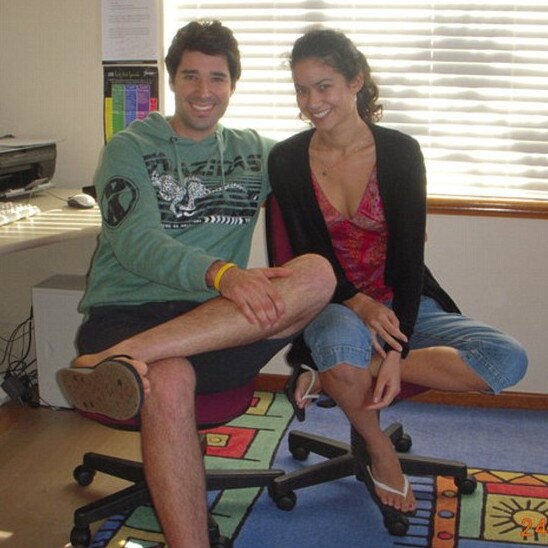
He adds: “Before we started the business I didn’t even really like using computers.”
But they soon saw the limitations of the market for their business, and decided to take on the likes of global tech giants Adobe and Google with a much bolder pitch: creating design software that anyone could use.
They went searching for capital in 2012 but investors wouldn’t bite. Australia was too far away, Perkins and Obrecht lacked technical expertise, and investors didn’t want to back a co-founding team who also happened to be a romantic couple.
Perkins wouldn’t give up, though. She spent three months in 2012 living on the floor of a San Francisco apartment belonging to her brother Greg, commuting to Silicon Valley every day to pitch the idea she was sure would transform the world of design software (then awkwardly named Canvas Chef, as users could take high-quality ingredients like beautiful stock photography and fonts, and throw them together like on a cooking show).
“We pitched to almost every VC [venture capitalist] in the world,” Obrecht says. “There were some really dark moments.”
She learned kitesurfing, after hearing many investors used it as a way to network – her target was Bill Tai, who ran a “MaiTai” camp for entrepreneurs in Hawaii. It worked. Tai was among the first investors to commit a total of $1.5 million in seed funding to Canva – which was matched by a grant from the Australian government as part of an effort to keep the company on local shores.
“Kitesurfing is one of those sports that takes a certain kind of attitude and persistence, and despite Mel not ever really having that kind of background she just had that spirit to try,” Tai says now. “Being able to handle anything, whether it’s facing uncertainties in markets and trends in your operation, where everything can be on the verge of going wrong, she can just handle it – and that’s the DNA of a great start-up entrepreneur.”
Perkins says she is now retired from kitesurfing.
Perkins and Obrecht reckon they were rejected by more than 100 investors before they received their first “yes”. And even then, they were only at the foot of the mountain.
Tai introduced Perkins to Google Maps creator Lars Rasmussen, who offered to help secure their first technical hires to code the Canva platform. The meeting with Perkins and Rasmussen lasted hours. “I just got back from my meeting with Lars and it went really well,” Perkins wrote in an email to Tai. “He was excited by the idea and thinks we are on the right track. It sounded as if our ideas are very much in line with a few particular issues/opportunities they have been considering lately. He has said he will help me choose the engineers to recruit as well, which was very generous of him.”
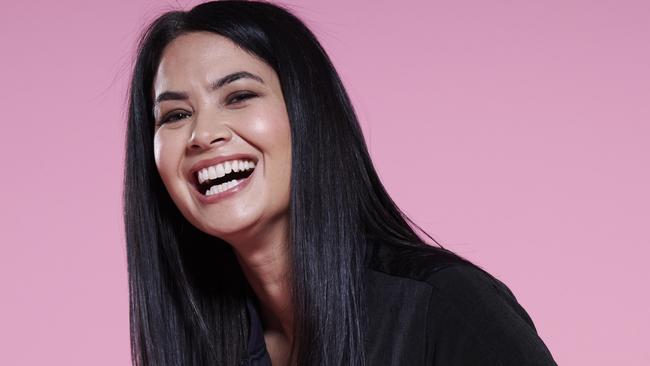
She forwarded the email to Obrecht, who replied: “You are the best business woman in the world and I am so proud of you, well done you WILL SUCCEED I HAVE NO DOUBT. I can call you if you want :)”
Special sauce.
Perkins scoured hackathons, conferences and startup events to find someone to present to Rasmussen – someone who could both meet his high technical bar and could commit to being Canva’s third co-founder.
“Every time I brought Lars someone, he said they weren’t good enough,” Perkins recalls. “He had all these attributes that they needed to have to be able to build Canva, which was a very complicated system, and he just rejected everyone... It was extraordinarily frustrating for a whole year. I just wanted to get started and get off to the races, I’d bring him LinkedIn posts, physical people, and he said no to everyone.
“Until he introduced me to Cam [Adams], and to Dave [Hearnden]. And that was really what set the foundations in motion.” Ex-Googlers Adams and Hearnden would become Canva’s chief product officer and chief technology officer respectively.
Adams, of Canva party DJ fame, had been working in Sydney at Google with Rasmussen on what was then a secret project known as Google Wave, which combined features such as email, instant messaging and social media. Probably a decade ahead of its time, Google Wave didn’t take off, and the project disbanded. Many of its 60-strong team including Adams joined the fledgling Canva.
Google the phrase “bizarre pitch deck” and one of the top results is a 16-slide pitch deck by Perkins, made specifically to recruit Hearnden. In it, she tells the story of a man named Dave, who longed for adventure but was torn by his loyalty for Google. In the pitch deck, as in real life, “Dave” chooses Canva.
“This is not just a unicorn,” Rasmussen tells The Weekend Australian Magazine, invoking the term for billion-dollar technology startups. “It’s a generationally important company. When you look at the design world it’ll be before and after Canva. And like, the fact they even dared to do what they did... Because when they started, there was one design company in the world, Adobe, and most entrepreneurs just stayed away from that space thinking the game has been played, it’s over, Adobe won.
“Mel and Cliff are just like, ‘We can do it much better’. And they did.”
In 2011 Eric Ries published The Lean Startup, the book that quickly became a bible for entrepreneurs to build and scale up technology businesses. The crux of its message was to get a product out there as quickly as possible and rapidly iterate based on customer feedback. Canva’s co-founders took the opposite approach, despite the consternation and impatience it caused their investors.
“We resisted it, because we had a really strong vision of the product that we wanted to deliver,” Adams says. “We knew that if we didn’t produce a polished experience that really grabbed people, that made them realise we had something special, we wouldn’t have been successful. Investors and other people kept asking when we were going to release Canva, but we took our time.”
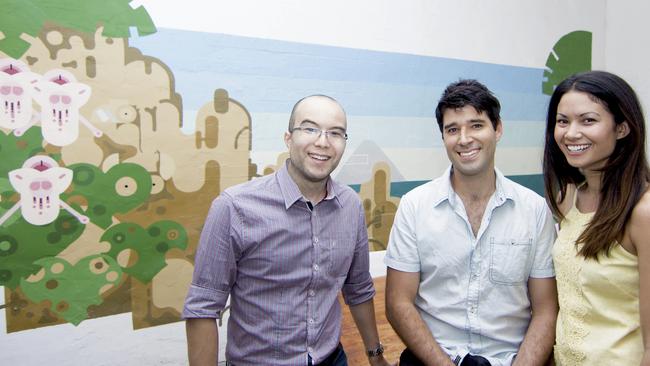
It would take a year from mid-2012 for the team to build what would become Canva: a software tool allowing anyone, anywhere to create a design within ten minutes. The platform racked up a waitlist of 50,000 users on the back of buzz within the global design community and quickly went viral following its public debut in August 2013.
Over the next couple of years megawatt names would come on as investors, generating more headlines; they included Disney CEO Bob Iger, and Hollywood actors Owen Wilson and Woody Harrelson. Wilson and Harrelson now rank among the top venture capital investors globally for their early Canva bet, made eight years ago when the company was worth $US150 million. “Canva is on fire! This could be a game-changer,” Wilson said at the time. “Five million users in just over two years, the numbers speak for themselves.
“Great investment and top-notch team.”
Today, Perkins and Obrecht are worth $5.6 billion each.
Obrecht and Perkins have fronted rich list covers and been lauded as young billionaires. But as profitable as Canva may be, while the company is in private hands cash returns have been thin on the ground – and pressure is building for a pay day.
In 2022, Blackbird’s co-founder Rick Baker thought it was time to cash out a fraction of his holdings in the startup. Blackbird’s First Fund invested $3 million into Canva – a shareholding now worth over $1 billion. That money was, of course, all on paper until Baker made his move to sell. “We’d recently been talking to Mel and Cliff about the fact we would need some liquidity for our funds at some point in the next six to 12 months,” Baker says. “We made our first investment in Canva just over 10 years ago, when it was an idea in Mel’s head, and it was time to take some of those profits and give them back to investors. We really wanted to do it with the support of Canva, of Mel and Cliff – that was really important.”
Perkins and Obrecht even helped network. “When Mel and Cliff were over in the US, they met a bunch of investors and there was so much interest generated that we thought this is the right time to do something. To get this calibre of investors on board is a win for us and a win for Canva.”
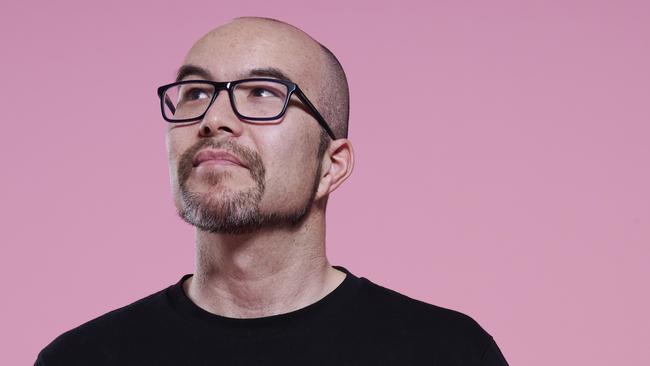
With the deal sealed in August, locking in the $US25.6 billion valuation and effectively firing momentum for the IPO, he found himself reminiscing. “Mel and Cliff had invited some investors to go wakeboarding on the Swan River. Mel and I just sat at a picnic table and got talking. I was at [private equity firm] MLC and thinking of starting a venture fund.
“I was telling the story about how I thought there was an opportunity for an Aussie VC [venture capital] fund to be started and back the next cohort of great Aussie companies. And well, at the same time Mel was telling me how she had this dream of turning what was Fusion Books into Canva, a global graphic design platform, and we’re sort of sharing our dreams.
“I think all of us there saw the spark from Mel and Cliff, they’d just light up and get so excited about it. We invested $250,000 ... which was the best investment we’ve ever made.”
“At Canva a lot of the board meetings are just Mel talking about what her next plans for the product are. We really look forward to the board meetings because it’s like, ‘What is the next thing that’s going to pop out of Mel’s mind?’ The Aussie playbook for Canva is Atlassian. One of the things that Atlassian did is really continue to compound strongly over the second decade.”
It’s true that Canva is often mentioned in the same breath as Atlassian, the workplace software firm led by Mike Cannon-Brookes and Scott Farquhar, as poster children of Australian tech with a local workforce of thousands of engineers – many of whom are graduates in their twenties. Atlassian’s successful listing on the Nasdaq a decade ago serves as a template for Canva to follow. Canva’s co-founders often seek advice from Cannon-Brookes and Farquhar, and the five are close friends.
“Mel is possibly the most visionary person I’ve met,” Farquhar says. “She has a belief she can see the future and totally will it into existence by sheer force of determination.”
Since their public listing in the US in 2015, the Atlassian duo have splashed their cash, ploughing tech profits into bricks and mortar as Australia’s most active property investors (the duo have been one-upping each other on prime Sydney house purchases, with Cannon-Brookes shelling out $100 million for the Point Piper estate Fairwater in late 2018, after Farquhar paid $70 million for neighbouring property Elaine the previous year.
Farquhar then eclipsed Cannon-Brookes’ new record by spending $130 million on Point Piper’s Uig Lodge in 2022). For now, Perkins and Obrecht still live in the same Surry Hills terrace they paid $1.5 million for in 2017. And even after they become cash billionaires – as opposed to paper ones – it’s unlikely we’ll see an Atlassian-style spending spree from the pair. There was a flurry of headlines around the time of the pandemic when the pair announced they would be giving away their fortune.
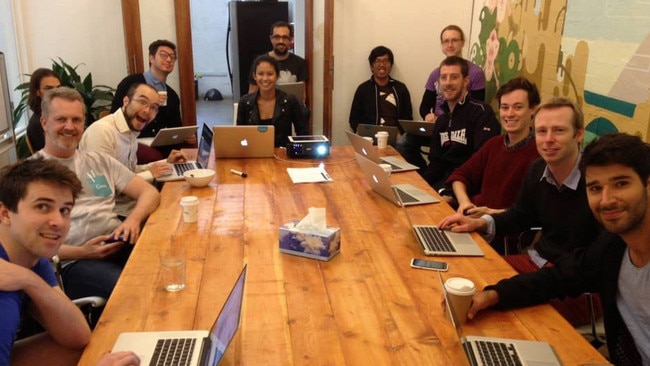
“It just doesn’t sit well with us being billionaires,” Obrecht says plainly. “We don’t want our kids to grow up super rich, and like, being rich isn’t something that is attractive.
“I went on a fishing trip last week, it was the best trip ever, right? It was absolutely not much in the scheme of going to a fancy arse resort. We like going backpacking through Thailand or India, or renting a motorbike and riding through Bhutan. That’s the stuff that engages us. We don’t do crazy things like fly private jets. We don’t do any of that stuff. We just want to kind of continue the life we have always led, and like that’s the sort of life we want to instil in our kids as well, that hard work ethic.
“The last thing you want to do is give a kid heaps of money and take the joy of actually creating something, and building for themselves, away from them.”
Early last year, Obrecht and Perkins welcomed their first child, and discovered the joy – and sacrifice – of parenthood
“It just adds an extra thing,” Obrecht says. “Something has to give, which is a bit of the socialising, you definitely have to make sacrifices but like, it’s the best thing that’s ever happened. It’s a worthwhile sacrifice.”
Their plan, repeated mantra-like by executives on stage and in interviews, is to build one of the most valuable companies in the world, and then “do the most good we can do”.
While they haven’t given it all up – the pair retain about 30 per cent of Canva privately – their philanthropic non-profit Canva Foundation is on track to become Australia’s largest charitable foundation, donating to causes such as the Aussies for Afghanistan Appeal and the war in Ukraine.
“It’s an obligation on us to use that to be a force for good and make the world a better place, rather than just hoard shit,” Obrecht says. “There’s only so many beds you can sleep in on any one night, and only so many steak dinners you can have.”
Marketer and investor Guy Kawasaki, who invented the job title “chief evangelist” working for Apple where he was close to Steve Jobs and Steve Wozniak, joined Canva in 2014. At the time, he said: “Macintosh democratised computers; Google democratised information; and eBay democratised commerce. In the same way, Canva democratises design.”
He’s told me before he’s never experienced a company in which its people more relentlessly pursue perfection.
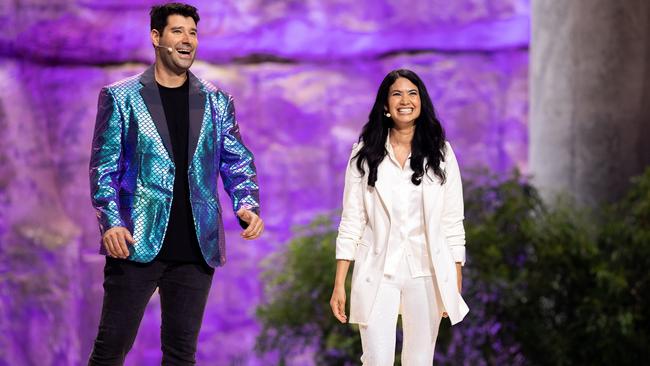
Says Baker: “I hope we start seeing the valuation step up along with its growth, it’s growing really strongly. There’s almost no company in the world growing at Canva’s pace, and creating as much free cash flow. It’s in rarified air, it’s probably the best software company in the world. Definitely in the top five. So I would expect the valuation to be ticking up now the world is hopefully through all the turmoil of the last couple of years.”
It’s all leading up to the company’s public listing, which could reasonably be expected to take place in the next 18 months when market conditions improve. Obrecht says Canva will “probably” opt for a US listing – cementing the company’s status as a global technology powerhouse – as opposed to the ASX.
Driving the price will be Canva’s vision for its future: growth Baker speaks of has arisen on the back of its use as a crucial tool for amateur designers, but its co-founders say its future lies in the workplace, and in artificial intelligence features. Imagine it: users type a few words and a design or presentation is automatically created in seconds.
Leading a publicly listed stock in the US is light years away from running a business from a Perth bedroom – or even a Surry Hills warehouse. In the past, startup creators have felt pressured to step aside after going public in the US. Not so for Canva, where the Obrecht-Perkins alchemy will remain at the heart of the company, its founders insist.
Says Obrecht: “We have zero intention of stepping away from our day-to-day roles. We’ve been driving Canva for the last decade and plan to continue doing so. Our two-step plan is both a huge opportunity and an important responsibility. We want to spend our lifetime working towards that.”
Perkins’ intentions are also clear. “A huge focus for the next few years is in building one of the world’s most valuable companies,” she says. “We’ve taken some steps in the right direction, but we have an extraordinarily long way to go.
“It feels like we’ve spent the last decade building the foundations. And I’m really excited about what we can build over the next decade.”
And after that? “And then step two, doing the most good we can do, is obviously a pretty ambitious thing,” she says. “I want us to be doubling down on this responsibility that we have to use this huge opportunity for great things.”
Ultimately, Perkins believes the DNA of the company is locked in – and it’s composed of experimentation, kookiness and an approach that is decidedly scrappy.
“It’s been scrappy the whole time. And it still feels scrappy,” she says. And there’s that all-important culture again. Expect Ninja Turtles in Canva’s world for some time to come.





To join the conversation, please log in. Don't have an account? Register
Join the conversation, you are commenting as Logout